n 1940, the British Army also formed "independent companies", later reformed as battalion sized 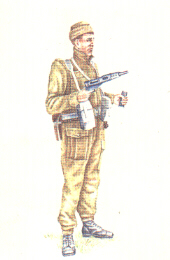 "commandos", thereby reviving the
"commandos", thereby reviving the word. It was intended that the British Army Commandos would be small,
word. It was intended that the British Army Commandos would be small,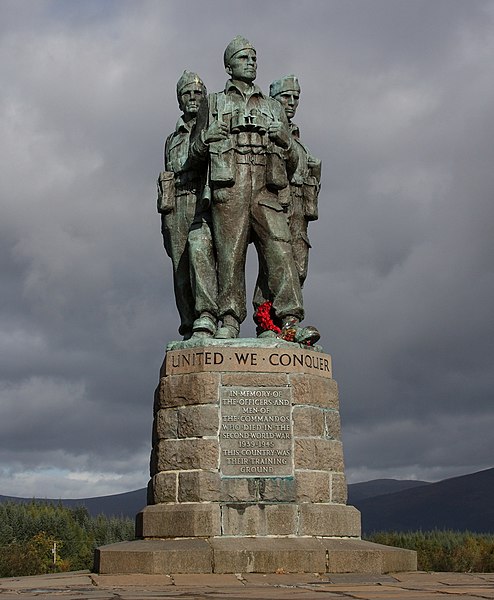 highly mobile surprise raiding and reconnaissance forces.
highly mobile surprise raiding and reconnaissance forces. They were not intended to remain in field operations for more than 36 hours and carried all they needed. Army Commandos were all
They were not intended to remain in field operations for more than 36 hours and carried all they needed. Army Commandos were all  volunteers selected from existing soldiers still in Britain.
volunteers selected from existing soldiers still in Britain.
 "commandos", thereby reviving the
"commandos", thereby reviving the word. It was intended that the British Army Commandos would be small,
word. It was intended that the British Army Commandos would be small, highly mobile surprise raiding and reconnaissance forces.
highly mobile surprise raiding and reconnaissance forces. They were not intended to remain in field operations for more than 36 hours and carried all they needed. Army Commandos were all
They were not intended to remain in field operations for more than 36 hours and carried all they needed. Army Commandos were all  volunteers selected from existing soldiers still in Britain.
volunteers selected from existing soldiers still in Britain.
During the war the British Army Commandos spawned several other famous British units such as the Special Air Service, the Special Boat Service
the Special Boat Service and the Parachute Regiment.
and the Parachute Regiment. The British Army Commandos themselves were never regimented and were disbanded at the end of the war.
The British Army Commandos themselves were never regimented and were disbanded at the end of the war.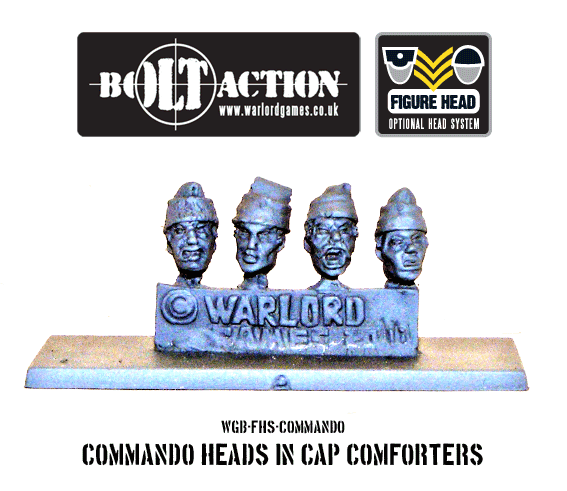
 the Special Boat Service
the Special Boat Service and the Parachute Regiment.
and the Parachute Regiment. The British Army Commandos themselves were never regimented and were disbanded at the end of the war.
The British Army Commandos themselves were never regimented and were disbanded at the end of the war.
The British Special Operations Executive (SOE) also formed commando units from British and displaced 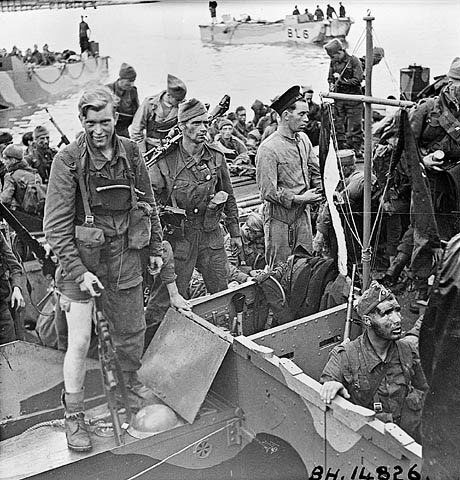
European personnel (e.g.Cichociemni) for the purpose of conducting raiding operations in occupied Europe. They also did small teams such as the SAS which was composed of 10 or fewer "Commandos" because it was better to do Special Operations. One example is Norwegian Independent Company 1, which was responsible for the destruction of heavy water facilities in Norway during 1941.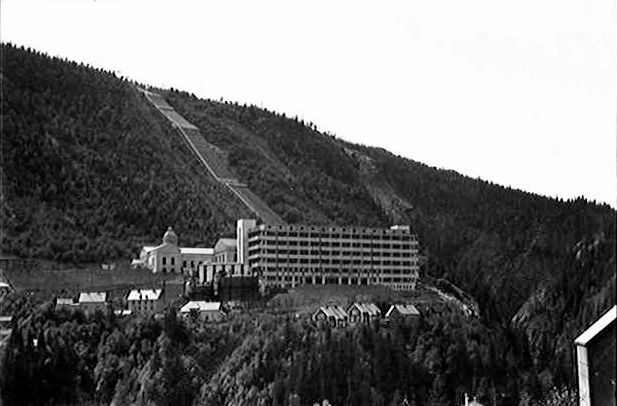

European personnel (e.g.Cichociemni) for the purpose of conducting raiding operations in occupied Europe. They also did small teams such as the SAS which was composed of 10 or fewer "Commandos" because it was better to do Special Operations. One example is Norwegian Independent Company 1, which was responsible for the destruction of heavy water facilities in Norway during 1941.

The Royal Navy also controlled Royal Navy Beach Parties,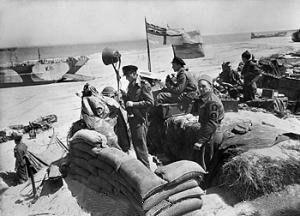 based on teams formed to control the evacuation of Dunkirk in 1940.These were later known simply as RN Commandos, and they did not see action until they successfully fought for control of the landing beaches (as in the disastrous Dieppe Raid of 19 August 1942).
based on teams formed to control the evacuation of Dunkirk in 1940.These were later known simply as RN Commandos, and they did not see action until they successfully fought for control of the landing beaches (as in the disastrous Dieppe Raid of 19 August 1942). The RN Commandos, including Commando "W" from the Royal Canadian Navy, saw action on D-Day.
The RN Commandos, including Commando "W" from the Royal Canadian Navy, saw action on D-Day.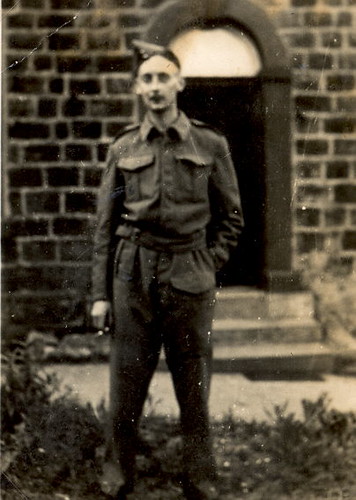
 based on teams formed to control the evacuation of Dunkirk in 1940.These were later known simply as RN Commandos, and they did not see action until they successfully fought for control of the landing beaches (as in the disastrous Dieppe Raid of 19 August 1942).
based on teams formed to control the evacuation of Dunkirk in 1940.These were later known simply as RN Commandos, and they did not see action until they successfully fought for control of the landing beaches (as in the disastrous Dieppe Raid of 19 August 1942). The RN Commandos, including Commando "W" from the Royal Canadian Navy, saw action on D-Day.
The RN Commandos, including Commando "W" from the Royal Canadian Navy, saw action on D-Day.
In 1942, the Royal Navy's nine Royal Marines infantry battalions were reorganized as Commandos,  numbered from 40 to 48, joining the British Army Commandos in combined Commando Brigades. After the war the Army Commandos were disbanded. The Royal Marines form an enduring Brigade-strength capability as 3 Commando Brigade.
numbered from 40 to 48, joining the British Army Commandos in combined Commando Brigades. After the war the Army Commandos were disbanded. The Royal Marines form an enduring Brigade-strength capability as 3 Commando Brigade.
 numbered from 40 to 48, joining the British Army Commandos in combined Commando Brigades. After the war the Army Commandos were disbanded. The Royal Marines form an enduring Brigade-strength capability as 3 Commando Brigade.
numbered from 40 to 48, joining the British Army Commandos in combined Commando Brigades. After the war the Army Commandos were disbanded. The Royal Marines form an enduring Brigade-strength capability as 3 Commando Brigade.The Royal Air Force also formed 15 commando units in 1942, each of which was 150 strong. These units consisted of trained technicians,armourers and maintainers who had volunteered to undertake the commando course. These RAF commandos accompanied the Allied invasion forces in all theatres; their main role was to allow the forward operation of friendly fighters by servicing and arming them from captured air fields. However due to the forward position of these airfields, the Royal Air Force Commandos were also trained to secure and make safe these airfields and to help defend them from enemy counter attack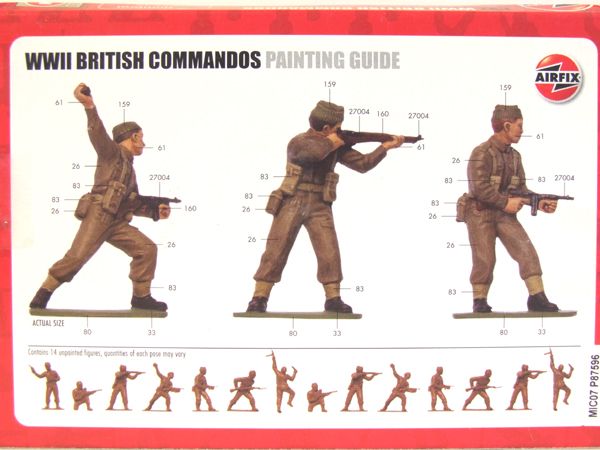

The Waffen SS can be divided into three general categrories.
If one assumes a special forces mission then the SAS would win hands down (the waffen SS had few dedicated special forces, though they did have Skorzeny. Their training [for SF missions] and equipment was far below British standards though. For example Skorzeny had to use British silenced stens because he couldn't persuade the Heer to make silenced weapons.)
If you want conventional warfare then the SAS would take an absolute beating. Their one attempt at a "big" mission was a total failure. They were raiders, scouts and intelligence gatherers, not soldiers.
imagination. I dare you to find anything even remotely as bad as the "Das Reich's" march across France in '44 from the SAS. n WWII, there is nothing remotely close to the conduct of Das Reich in France.

Post war though, some of the SAS actions against Kenyan Mau Mau Guerillas (both real and imagined) as well as Malaysian Communists were pretty ugly. This is especially so in Kenya. Furthermore, I would not be surprised if the race of the Mau Maus (black) was a factor in some "shoot / no shoot" decisions that would have been decided very differently with a white, Western European enemy.

 |

A. Elite Panzer and Panzer Grenadier divisions trained to a very high standard, armed with the best weapons available and a good dose of political fanaticism. Most were German, but their ranks included thousands of foreign volunteers.
B. Divisions of Ukrainians, Estonians, Russians orgainized, trained and equipped as standard German infantry divisions. (at best)
C. Groups of bandits orgainized into batalions and brigades. Used for rear area security. Very brutal reputation against civilians.
The training of elite Waffen units is comparable to the training given US Marines and Rangers as well as elite units of other nations. They are regular troops trained to a very high standard, but not true special forces.
Small groups of SS men were used in the special forces role during the war. The Germans, however, never really developed the special forces "concept". Perhaps Hitler was paranoid of such units.
-Invasion of USSR Small groups of SS parachute into Baltics and Ukraine to "jump start" anti Soviet revolts in wake of German advance.
- Hungary 1944 Small teams of SS men arrest key members of anti German leadership. This allows Pr erman govenment to be created.
- Branderberger units used in USSR and Ardennes probably had many members taken form Waffen SS divisionsThe fun part is: the original SAS (lets compare what is comparable not the SS of 1944 and the SAS of 2006) had no formal training. But they had a great deal of experience. They were Englishmen used to desert navigation, nothing more. The all elite stuff came latter.
The English units that had a real tough training were the commando brigades. And their size was already more comparable with the SS units. But their role was totally different as they were supposed to be soldiers specially used for special ops. The SS were just very very good soldiers but used as any other unit.
However there were german units comparable to commandos and some of them were SS (Skorzeny troop, SS paratroopers) ans some were Wermacht (Brandbourg regiment) or Luftwaffe (paratroopers). But SS as a whole had nothing to do with commandos.
Finally the British troops had another advantage: they were the good guys in the picture so it is normal that they won at the end. Waffen SS soldiers like Das Reich, Totenkopf, and Frundsberg were elite mechanized, armoured, or infantry units meant to engage in pitched battle and take territory. SAS were elite raiders, which is a very different role. A better comparison would be between the Brandenburgers and the SAS.
The SAS included huge numbers of ex-commandos (the remains of Layforce.). David Stirling, Paddy Mayne etc. were all commandos. That said they are very different to the force of today.
No comments:
Post a Comment